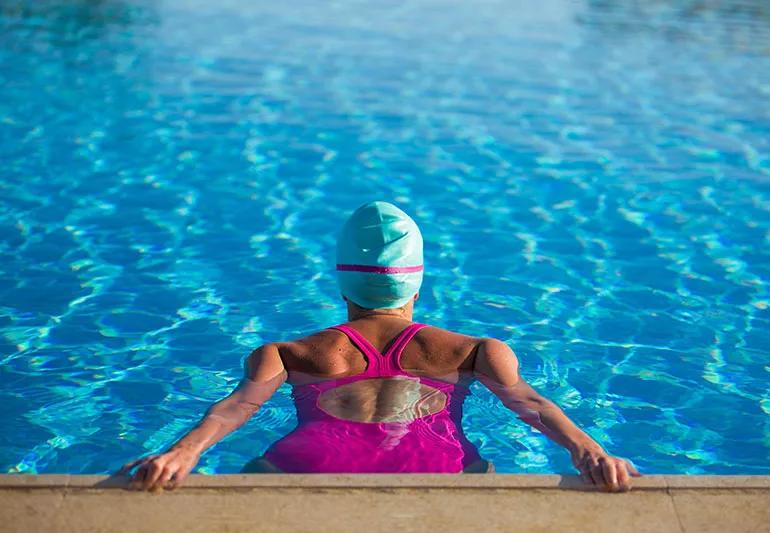Nurses study the associations between exercise volume and symptoms and hospitalization

Lee Anne Siegmund, PhD, RN, CEP, earned her doctorate degree in exercise physiology. As a nurse scientist at Cleveland Clinic, she is always on the lookout for opportunities to study exercise patterns. When the coronavirus pandemic hit, Siegmund embarked on a research project related to exercise and COVID-19.
Advertisement
Cleveland Clinic is a non-profit academic medical center. Advertising on our site helps support our mission. We do not endorse non-Cleveland Clinic products or services. Policy
“I was interested in finding out the relationship between volume of exercise completed prior to COVID-19, which includes intensity, duration and frequency, and COVID disease severity among adults who tested positive,” she says.
Dr. Siegmund was principal investigator on the study, which used a cross-sectional design with survey and database methodologies. A convenience sample of adults who had previously tested positive for COVID-19 were sent an online questionnaire that asked about intensity, duration and frequency of exercise. In addition, Siegmund and her research team accessed the COVID-19 research database at Cleveland Clinic to ascertain COVID-19 symptom burden and hospitalization status during their COVID experience.
In total, 394 adults who had contracted COVID-19 completed questionnaires and data on age, sex, body mass index and comorbidities.
Overall, the mean (standard deviation) exercise score of participants was 6.5 (3.3) on a 0-13 point scale (higher score equates to higher volume). “Those with higher volume of exercise before having COVID-19 were more likely to have flu-like symptoms and a higher number of symptoms. However, hospitalization rates were not based on previous exercise volume,” says Dr. Siegmund. She adds that in other research papers on exercise, elite athletes were more likely to have cold and flu-like symptoms in the three months leading up to Olympic competition. Although participants in this study were not elite athletes, the intensity and duration of pre-COVID-19 exercise may have been a contributing factor to symptoms.
Advertisement
Dr. Siegmund hypothesizes that there may be a connection between high exercise volume and immune system function. “Other researchers found that exercise affected the immune system, but we didn’t assess that connection in our study,” she says. “Research involving serum laboratory samples are needed among patients with new-onset COVID to learn more about a possible relationship.”
Advertisement
Advertisement

How hospitals can weave ethics into daily nursing practice to strengthen patient-centered care

Mobility carts provide exercises and tools

Nurse researchers explore the relationship between readmission risk scores and acute care transfers

Guiding nurses amid a constantly evolving healthcare landscape

Ideation session generates solutions to medication administration errors

Caregivers spearhead changes that improve patient care, shape hospital culture

Building a culture that supports, engages and empowers nursing staff

Nurses harness cutting-edge technology as a bridge to healing